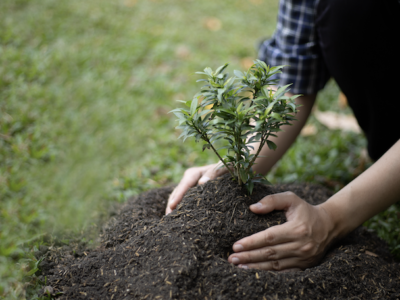By Rabbi-Cantor Cheri Weiss
The festival of Tu Bishvat (celebrated this year on February 5 & 6) is considered a “minor” holiday on the Jewish calendar. Unlike the major (or “pilgrimage”) holidays of Shavuot and the first and last days of Passover and Sukkot, there are no prohibitions against any kind of work on minor holidays (which also include Purim and Chanukah). This holiday’s name is taken from its date on the Hebrew calendar: the fifteenth (denoted by the Hebrew letters tet – vav, pronounced “tu”) in the month of Shevat.
Like the other minor holidays, Tu Bishvat is not mentioned in the Torah. It was only later that the rabbis accorded it special status as one of the four “New Years” on the Jewish calendar. The others are the first of Tishrei (aka Rosh Hashanah), the first of Nisan (the month of the Exodus and rebirth of the Jewish people), and the first of Elul (when cattle were counted and prepared for tithing to the priests in the Great Temple).
According to the Torah, fruit was not to be eaten from a tree during its first three years after planting: “When you enter the land and plant any kind of fruit tree, regard its fruit as forbidden. For three years you are to consider it forbidden; it must not be eaten.” (Leviticus 19:23) In the fourth year, the fruit was to be considered as “holy” and was to be given as an offering to the Temple priests. From the fifth year on, the people were finally able to partake of the tree’s bounty.
For this agrarian society, the rabbis determined that the 15th of Shevat would be the “New Year for Trees” as a way to calculate the age of all trees regardless of their actual planting dates. It was assumed that by this date, most of the severe rains would have fallen in the Holy Land, and trees would begin a new cycle of growth as Spring began to approach.
In Kabbalistic times (16th century), the followers of Rabbi Isaac Luria celebrated Tu Bishvat with special rituals, including a festive meal (Seder) as a way of honoring God’s Divine presence in nature; particularly the land, trees, and the blessings of abundance that they provided. Fruits, nuts, and wine of various colors formed the basis of their Seder, each item receiving its own specific blessing. This tradition has been passed down through the generations and has increased in popularity throughout the Jewish world with festive Seders and special Haggadot written for the occasion. (Many Tu Bishvat “Haggadot” may be found online.)
Today, the celebration of Tu Bishvat has expanded and is now known as the “Jewish Earth Day.” On this day, we can renew our commitment to protecting the health and well-being of our planet by educating ourselves on ways we can preserve our natural resources. In Israel, the holiday has long been associated with the planting of trees – a visible homage to the renewal of nature.
We are blessed to be caretakers of God’s world. As noted in Psalms 24:1: “The earth is the Lord’s, and everything in it, the world, and all who live in it.” Let us celebrate our good fortune this Tu Bishvat by taking the time to honor God’s abundance and ensuring that it is available to all future generations.








Comments